At 99 Years Old, George Etzweiler Can't Stop Running
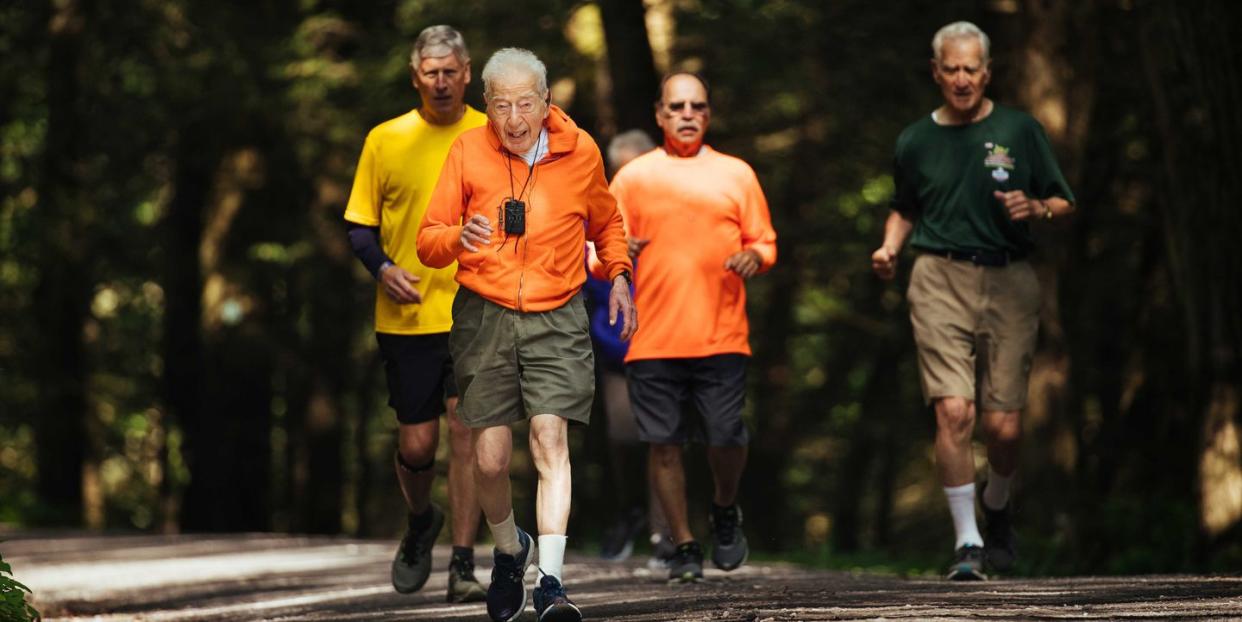
Six old men gather for a run in the mountains outside of State College, Pennsylvania. “Old,” of course, is a relative term. If you’re 25, 60 seems ancient. If you’re 55, 60 is the new 50. But by any measure, these runners shuffling down the mountain in the morning mist qualify as old. They are grey-haired, hunched over a bit, creaky in the knees, a little hard of hearing—everything you’d expect from people who were coming of age when the Beatles crossed Abbey Road.
They are “The Old Men of the Mountains.” But you’d be wrong to call them elderly. They’re runners, after all, members of a 50-mile relay team that’s famous in these parts of the Allegheny Mountains in Centre County. The youngest runner, “the kid,” recently turned 67. The eldest, George Etzweiler, is 99 years old. Ninety-nine! He was born in 1920. That’s the same year Charlie Chaplin’s silent movie The Kid made its debut.
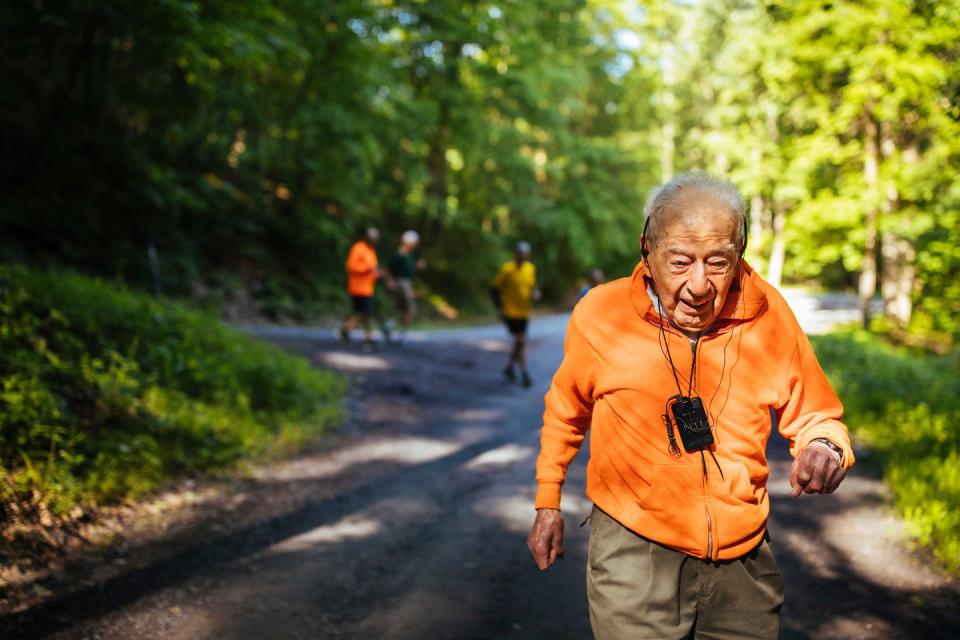
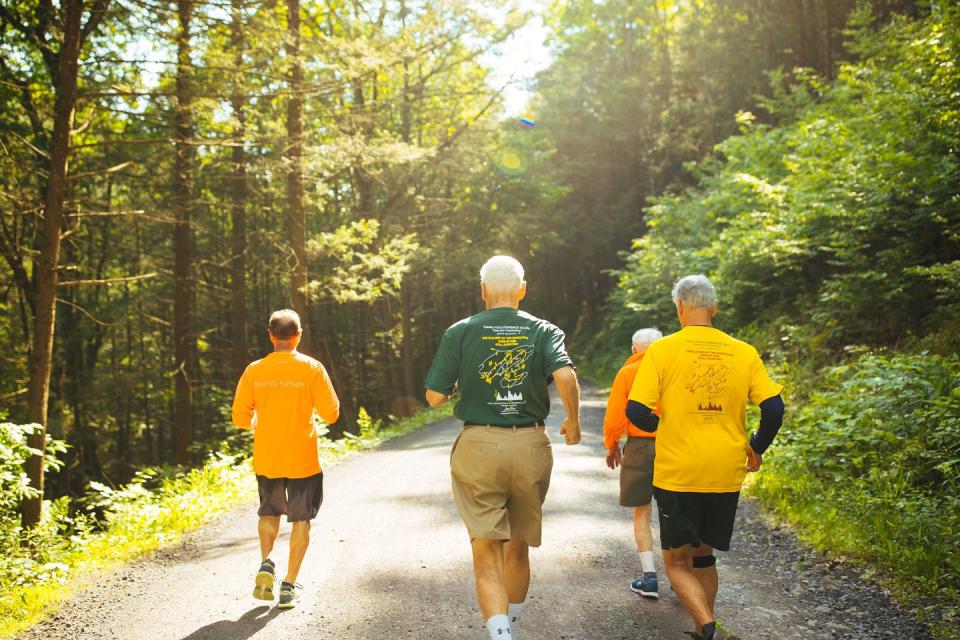
Short in stature, and breathing like a struggling freight train, George leads his team around mountain switchbacks and gravel roads on this cool June morning for a training run. The boys are preparing for the annual Tussey Mountainback 50-miler. Since 2007, George has coaxed and cajoled other old runners out of their easy chairs for the event.
A black Chevrolet Avalanche speeds up the gravel road as the men are pausing for a rest stop. “Car!” John Knepley, a four-time Old Man of the Mountain, yells. Everyone makes their way to the side, except for George who, even with his RadioShack hearing aid, doesn’t acknowledge the warning.
“CAR COMING, GEORGE!”
“Oh,” George says caught off guard. “Good grief.”
The men assist George to the slanted edge of the road as Chevy pulls past slowly, and then stops. The driver rolls down the window and points at George in is his orange jacket. “Hey, that’s the guy, right?” she says. “The old guy who runs.”
Video: See George in Action
The old guy who runs is not only well-known in Centre County, but at many other race venues in the Northeast, such as the famed Mount Washington Road Race—which George is a hall of famer for—in New Hampshire. He has run that one 13 times and is gearing up for a 14th this June. Otherwise, George sticks to two local races—a local 5K and Tussey—annually.
“Yep, that’s him alright.” Knepley replies. “That’s George.”
George waves to the driver and flashes a smile.
“I’m a freak, you know,” he says. “Someone called me a freak of nature once for what I do. I don’t know if it’s true or not, but there aren’t many people who are 99 and still living, and not many running a mile, I guess.”
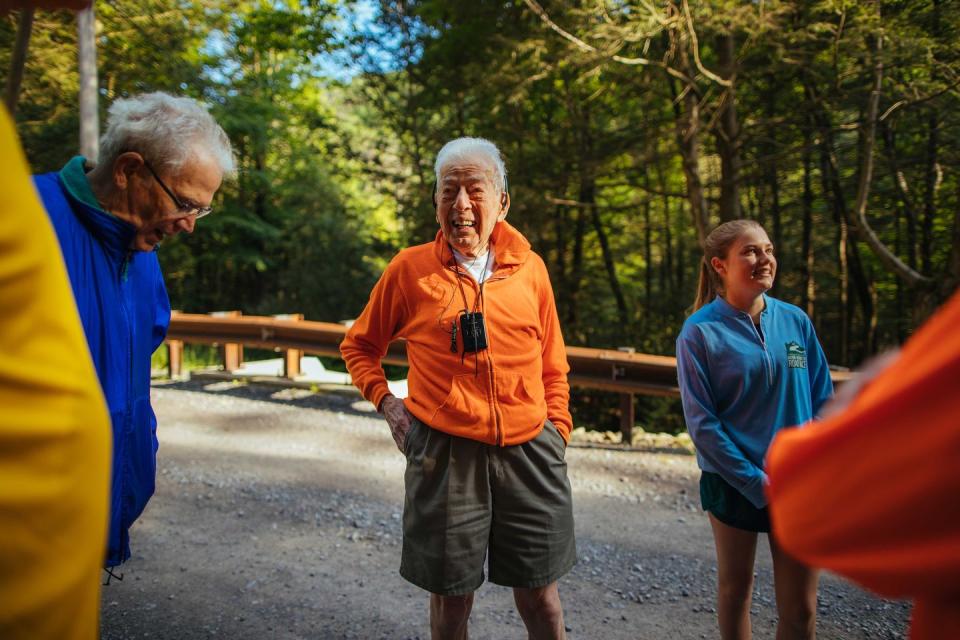
That’s no stretch. We see elderly runners every so often on courses from local races to the Boston Marathon, but only a handful. In fact, only 4 percent of road racers in the United States are over the age of 65, according to Running USA’s 2019 annual report, and that number dwindles with each additional decade.
Though many hang up their running shoes as they get up there in years, George has other plans for down-and-out old timers who still have a pep in their step.
THE OLD TIMER WHISPERER
George follows today’s workout with a post-run nap and then sits down for lunch. The microwave-hot bowl of pinto beans, rice, and vegetables cools as he sifts through a stack of lined graph papers, his running log, dating back to 1969. The graph paper was an obvious choice when he was an electrical engineering professor at Pennsylvania State University. And even in retirement, he keeps it up to date, logging almost every run.
After noting the day’s mile splits—with a 11:49, his fastest so far this year—and mileage, he pulls another folder of sheets. These only go back a decade at their oldest, but they are the record of The Old Men of the Mountains races.
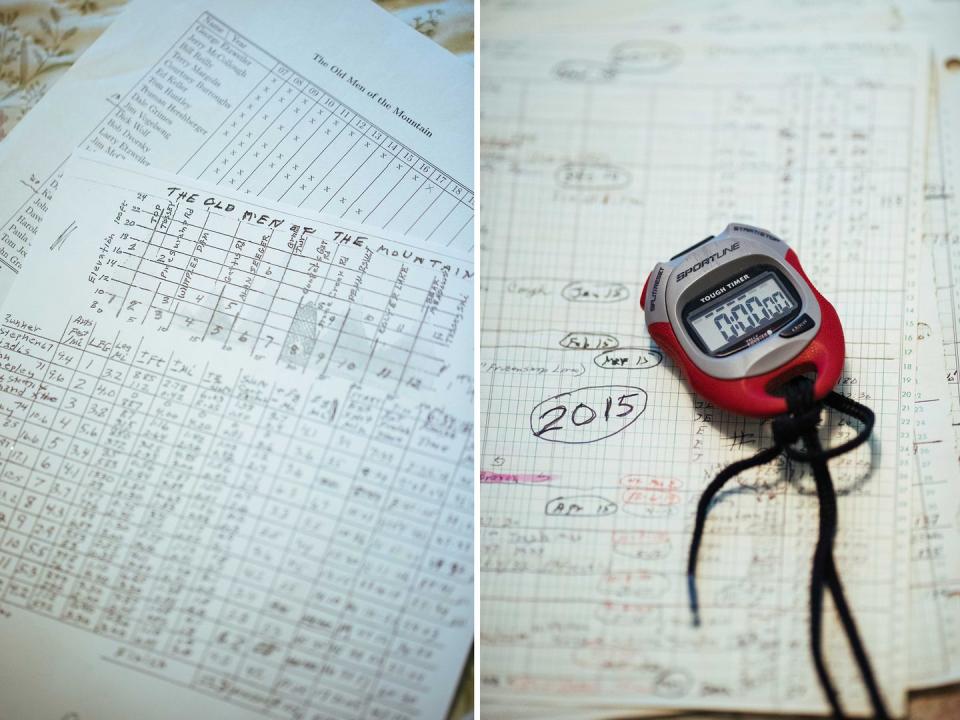
Here, George has listed every person he has charmed into joining his team. He does his own scouting, scouring race results, consulting current members, and cold calling potential racers. This has been his method since the group formed in 2007 out of a spontaneous interaction the morning of the 2006 Tussey 50-Miler. George, an avid fixture in the local running scene at a spry 87 years old then, was suited up in an orange vest as a volunteer for the morning shift, directing cars. As he did, the race director crossed his path and said in passing: “Man, couldn’t someone get together a team of old guys to run that 50-mile relay?”
George got the hint. He took to the phone book and started tracking down runners over 65. That was the hard part. Yet George has a way with people. His demeanor is relaxed. His humor legendary. His persuasiveness, a little abrasive and abrupt, gets the job done.
Take Ed Keller. Joint problems had slowed him down, but a decade ago, Keller did a 5K in his 70s. Two days later, George called.
“Are you Ed Keller, the runner?” George said on the phone.
“Well, it depends on how you define running,” Keller replied. Keller was having a hard time convincing himself he was still a runner. He was marathoner who could no longer go the distance. But George was persistent. He saw Keller’s time and knew he had what it took to run a leg at Tussey. Still, Keller resisted.
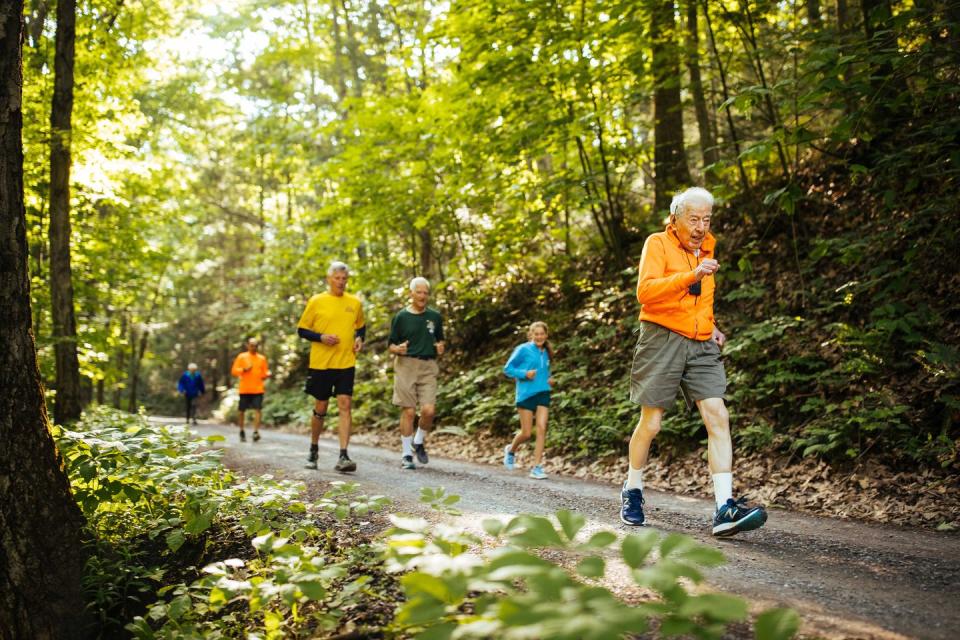
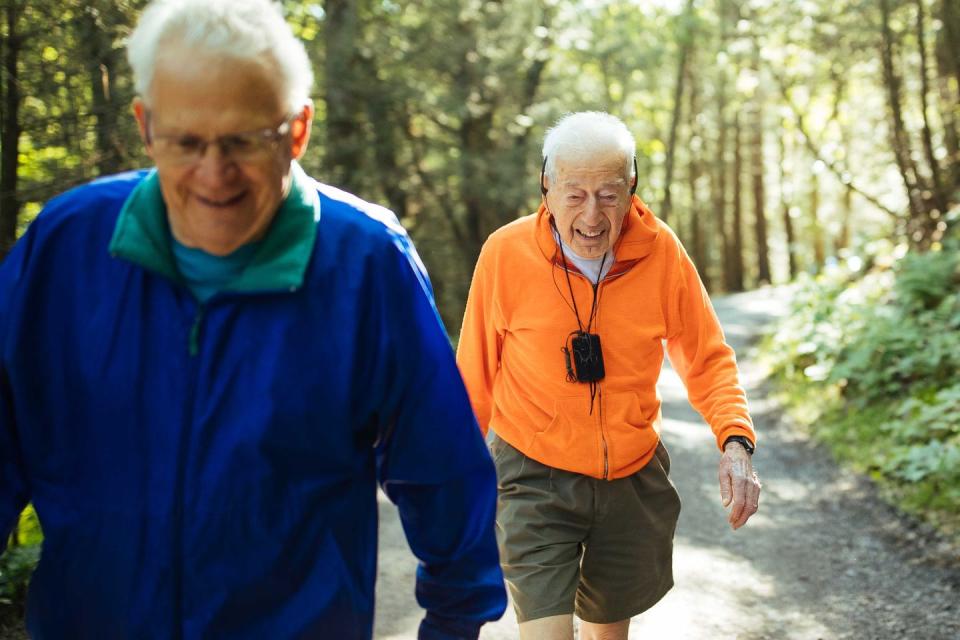
“I’m not sure I’m ready to run competitively,” Keller said.
“Look, I’m going to be doing a training run up Tussey Mountain,” George replied. “Why don’t you stop over and pick me up and we’ll go to the mountain?”
The two went up the mountain and Keller has done 10 races with The Old Men of the Mountains.
That’s how many found their way onto the team. George called, fed on their uncertainty, and showed them that if he could do it, so could they.
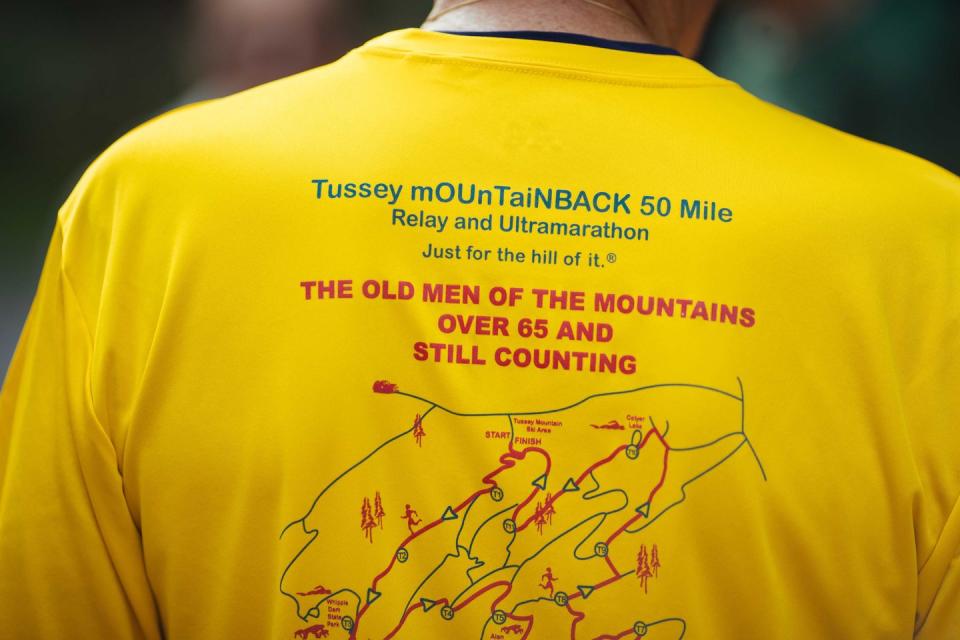
That’s why 33 runners are now listed on this sheet in front of George as he eats his lunch. A black X marks the number of times each runner has competed with the team. Only one row across has each box marked, and of course that’s for the 99-year-old slurping away at his vegan lunch.
A RUNNING LOVE STORY
George figures genetics or sheer stubbornness has something to do with his running longevity. But something else has played a defining role, a romance that dates back to 1937. George was a year out of high school at the time and working at the Lewistown Electrical Company. A friend introduced him to Mary Richard, who had a light that needed fixing. George was more than happy to oblige.
The light didn’t lead to a date, but two years later Mary needed a ride to a campfire picnic down at Penn Roosevelt State Park, just outside of town. George, the proud new owner of a 1929 Model-A Ford Pickup, offered to take her.
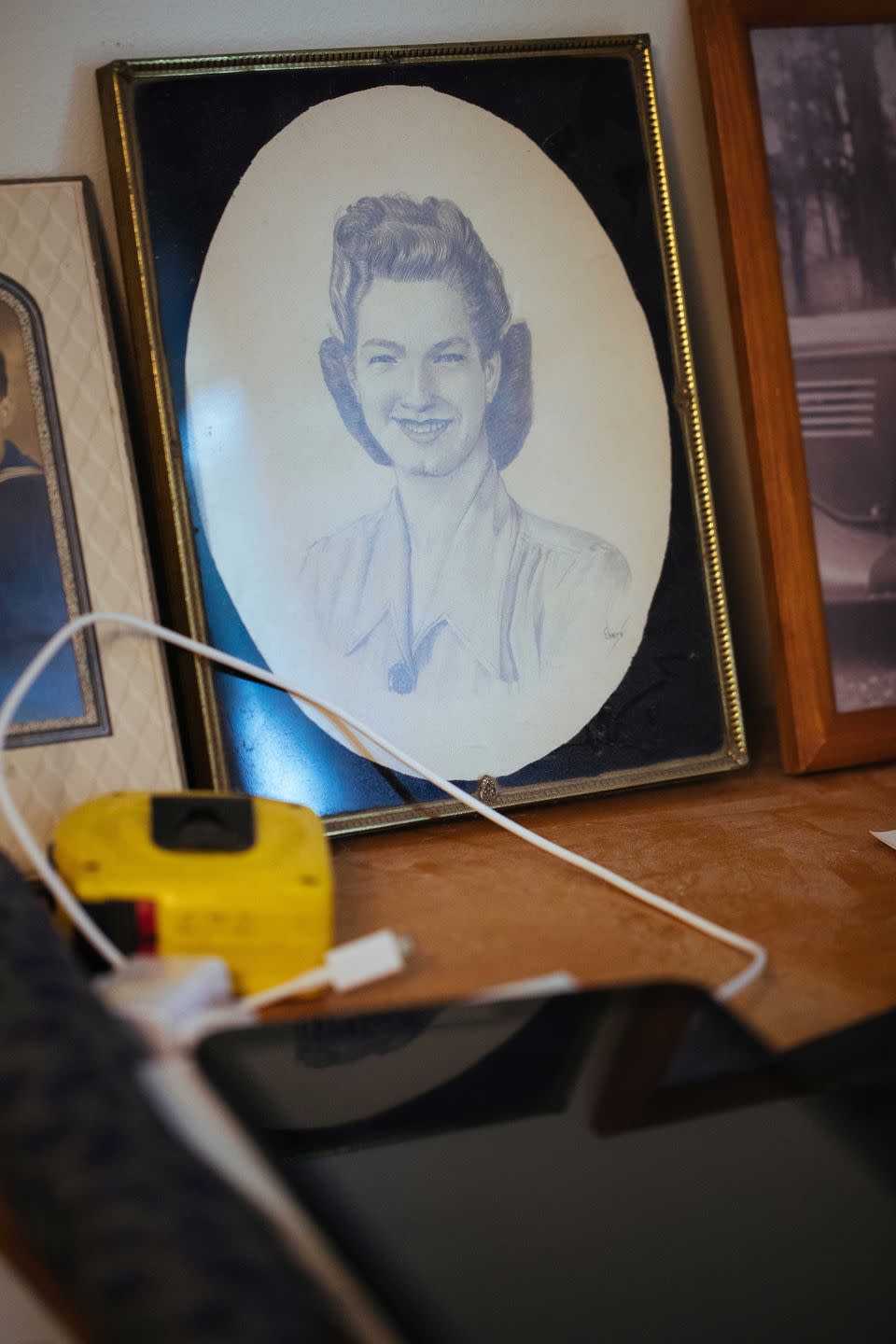
“She was just friendly and nice, compassionate and very much concerned about the underdog,” George says of Mary. “She was always cheering for the underdog for both sports events and the battle of life.”
Mary and George fed off of one another’s passion for life. They married in 1942. After serving in the Navy, George earned an electrical engineering degree from Penn State, and eventually returned as a professor. Mary worked part-time and volunteered, drove the car and cooked. George was a handyman fixing everything around the house. They were happy together and they did everything together one way or another.
Even when George first started running in 1969, Mary initially joined him. George, then 49, did his first mile at the urge of his fellow Penn State professors. A creeping belly had plagued him since his Navy days, so he ran, though he claims it nearly killed him that first day.
But he survived, and that week, Mary bought him his first pair of Army-green running shorts. He still has them and runs every race in them. Mary soon joined him on his runs for a few years until her joints forced her to quit.
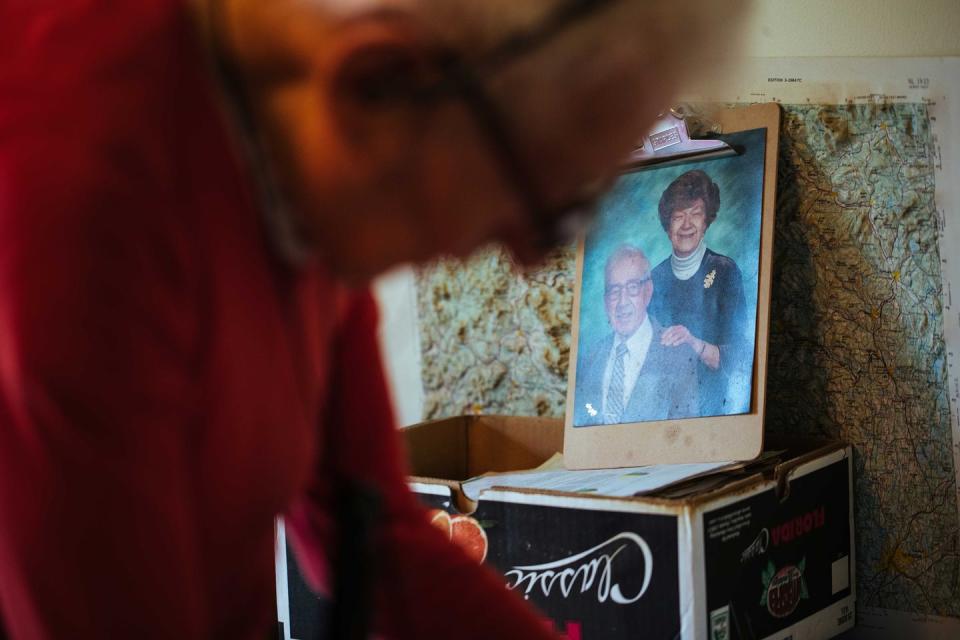
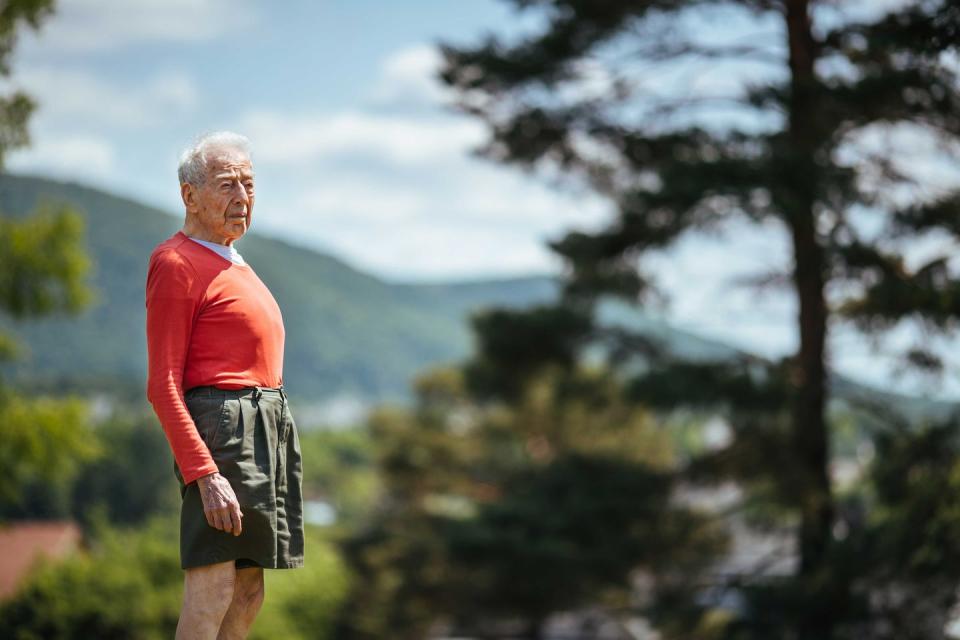
Mary still supported George in every race and every run. For decades she patched up those tattered green shorts. In their 80s, she would drive him to Tussey Mountain for his training runs, except she had the better part of those runs. She’d drive to the top and wait for him. Then, when he finally arrived, she’d drive him back down to do it again.
But it wasn’t until Mary’s last days that George realized why he still ran.
Mary first got sick in 2007 when she was diagnosed with mycosis fungoides, a cancer in the lymphatic tissues, on her stomach and back. She would beat it, but for the next three years, she was in and out of the hospital, George always by her side.
In July 2010, Mary was diagnosed with pulmonary fibrosis, a scarring of the lungs that made breathing difficult, and hospitalized again. But she encouraged George to keep running. This was the fourth year with his Tussey 50-Miler relay team. Mary insisted that he run it. George took the fifth leg, the earliest that didn’t require doing a second. George planned for their daughter Shirley to pick him up after his run and bring him back to the hospital to be with Mary.
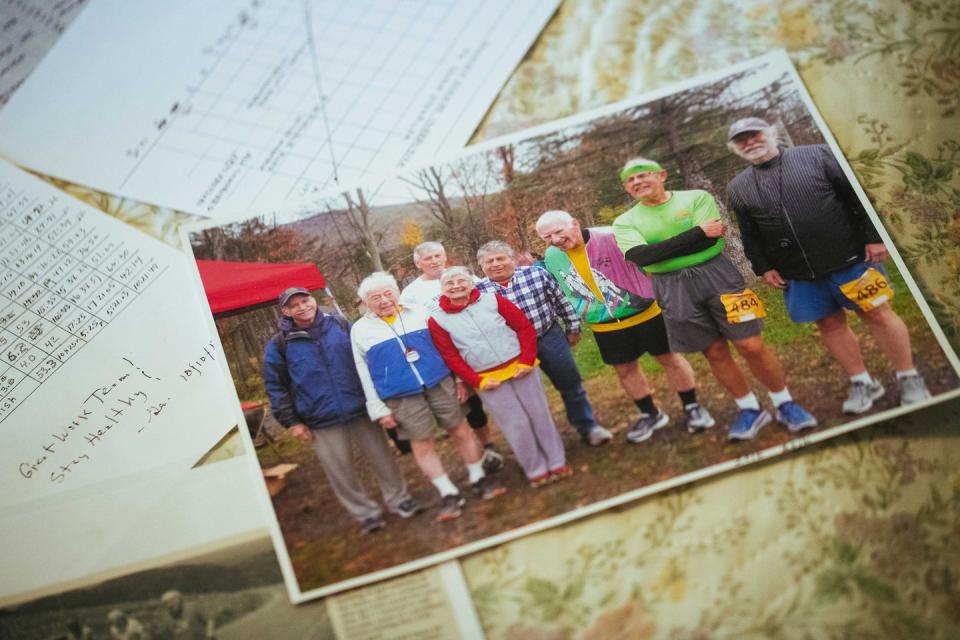
But when George neared the end of leg five, it was Mary who greeted him, sitting in the back of Shirley’s car with her oxygen tank. Neither George nor Mary had much breath. When Mary was able to, she spoke four words that George will never forget: “I’m proud of you.”
Mary lost her battle with pulmonary fibrosis in December of 2010. Though she’s gone, he still talks with her, often when he’s running, which he continues to do because he feels Mary would want him to. “I always think that she’d be encouraging me to keep doing this,” George says. “ ‘I’m proud of you.’ That hangs there in my mind.”
WE LOVE YOU, GEORGE
George is racing without his Mountain Men today. It’s one of his three annual races beyond the relay, the Mountain Washington Road Race in New Hampshire’s White Mountains. The 7.43-mile road climbs up more than 5,000 feet to the tallest point in the Northeastern United States.
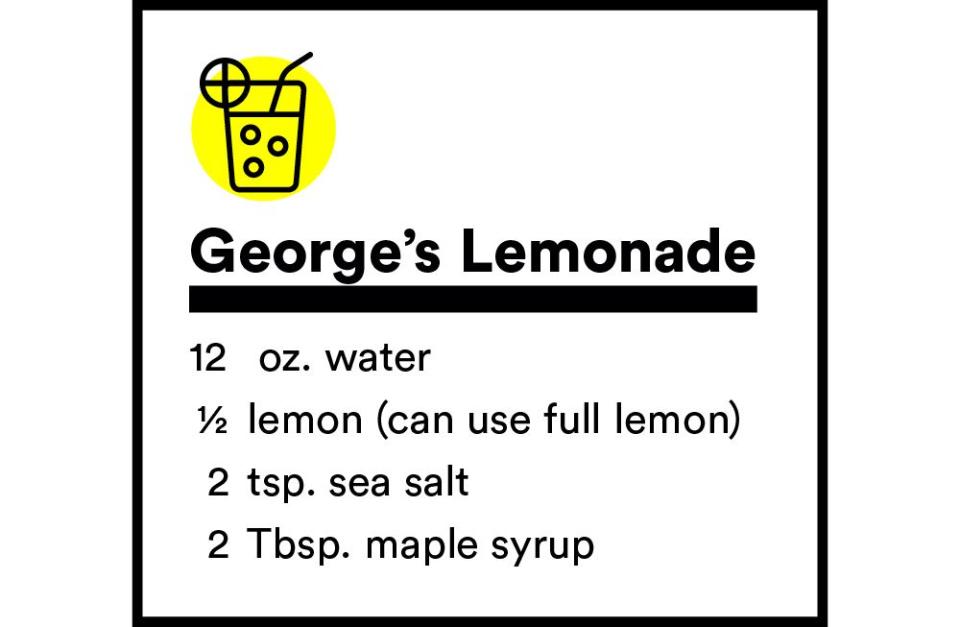
From the start, George falls to the back of the pack with his grandson, Bob, who acts as a pack mule carrying jackets and George's homemade lemonade—the only thing he consumes while running. Every runner goes by him, many taking pictures or wishing him luck: “Go, George.” We love you, George.” “You’re an inspiration, George.”
The word inspiration troubles George: “I haven’t died yet.” People see an elderly runner beating back age through a measured shuffle. Yet people don’t see his entire story. They don’t see him calling elderly runners to reignite the flame inside them when they think they’re done. They don’t see the champion of the everyday runner, who could have quit years ago. When he retired in 1993. Or when Mary passed away. Or even after this, his 13th time racing up Mount Washington.
But they do see a hero, an icon, charging up the mountain until he finishes in 4:04:48—a minute faster than last year.
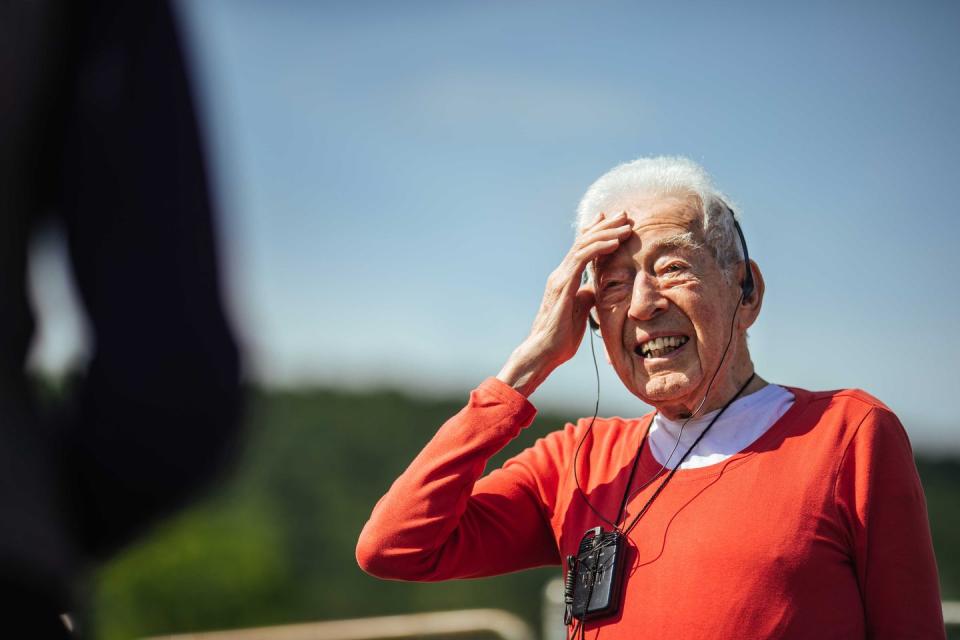
The minute George is back at the starting area where a postrace feast is happening, he is rushed to the stage where he is met with a minute-long standing ovation.
“You made a promise to us,” says the race announcer to George, “and you keep delivering on that promise that you’re going to keep going, right?”
“I’ll try,” he says.
As he exits the stage, he is rushed by the crowd of tired, cheering runners wanting to speak and take pictures with him. A young child tugs on her mother’s shorts and whispers a question. Mom crouches down and points to the legend before them. “You know who that is?” she says. “That’s George.”
You Might Also Like

